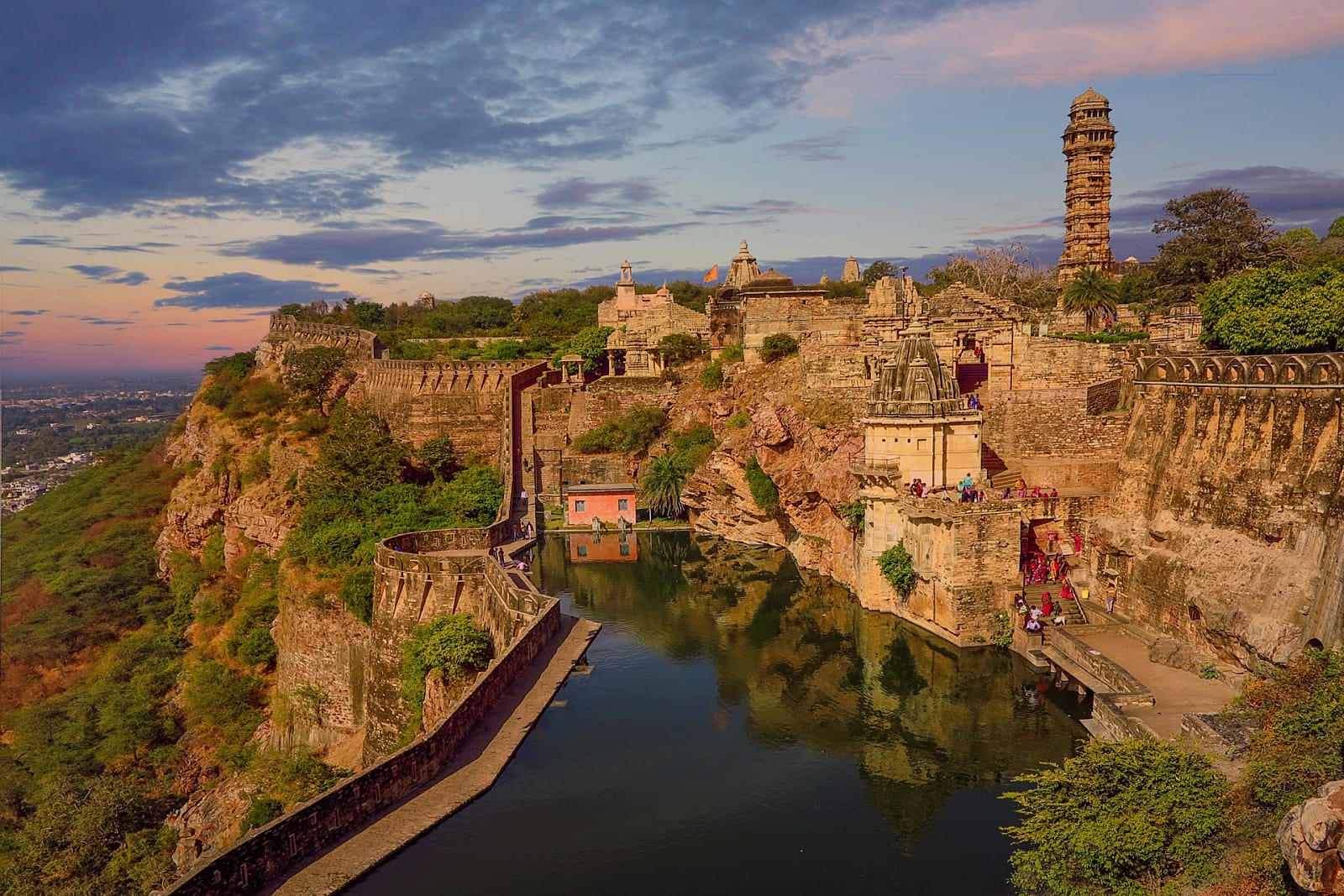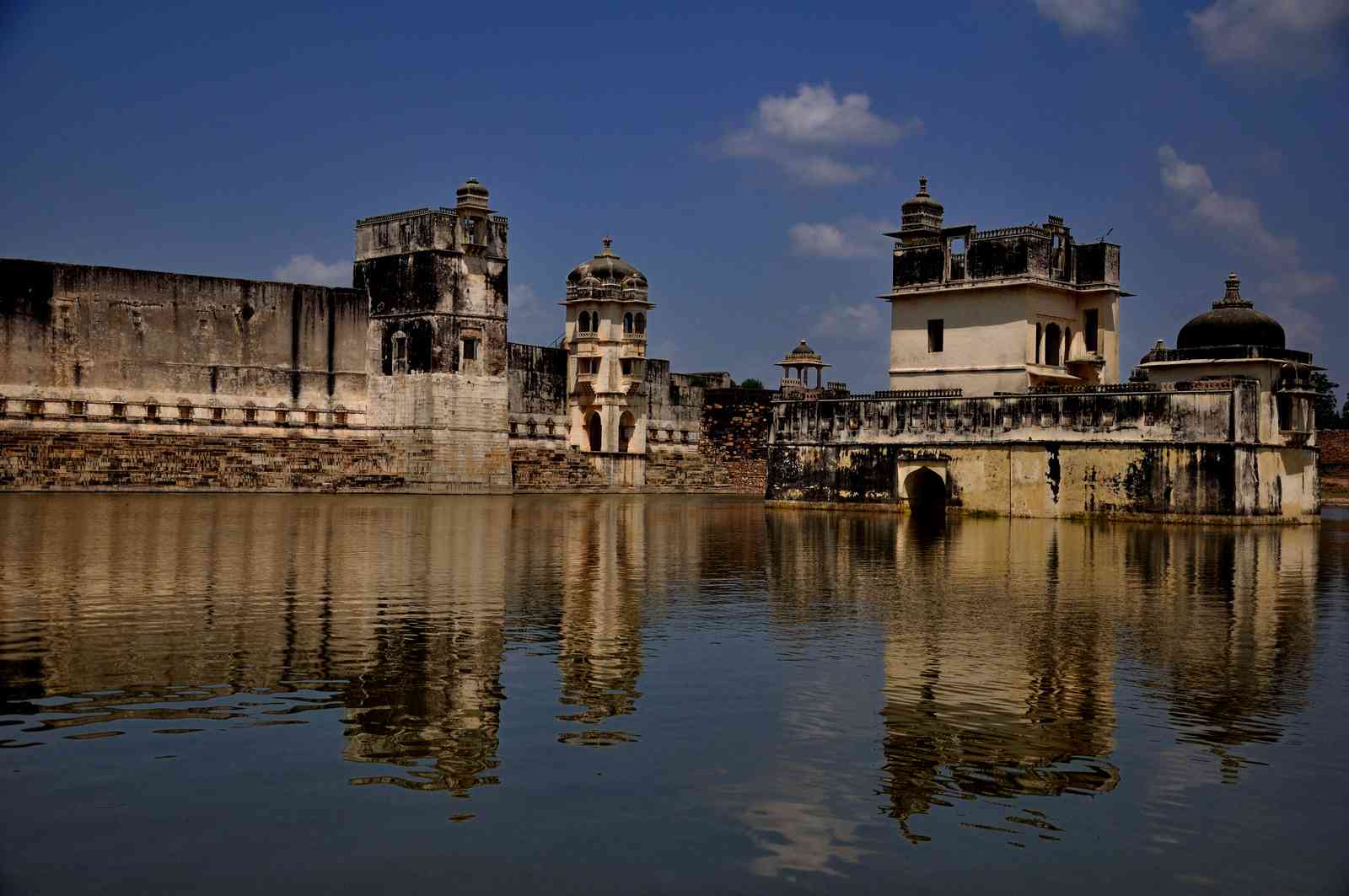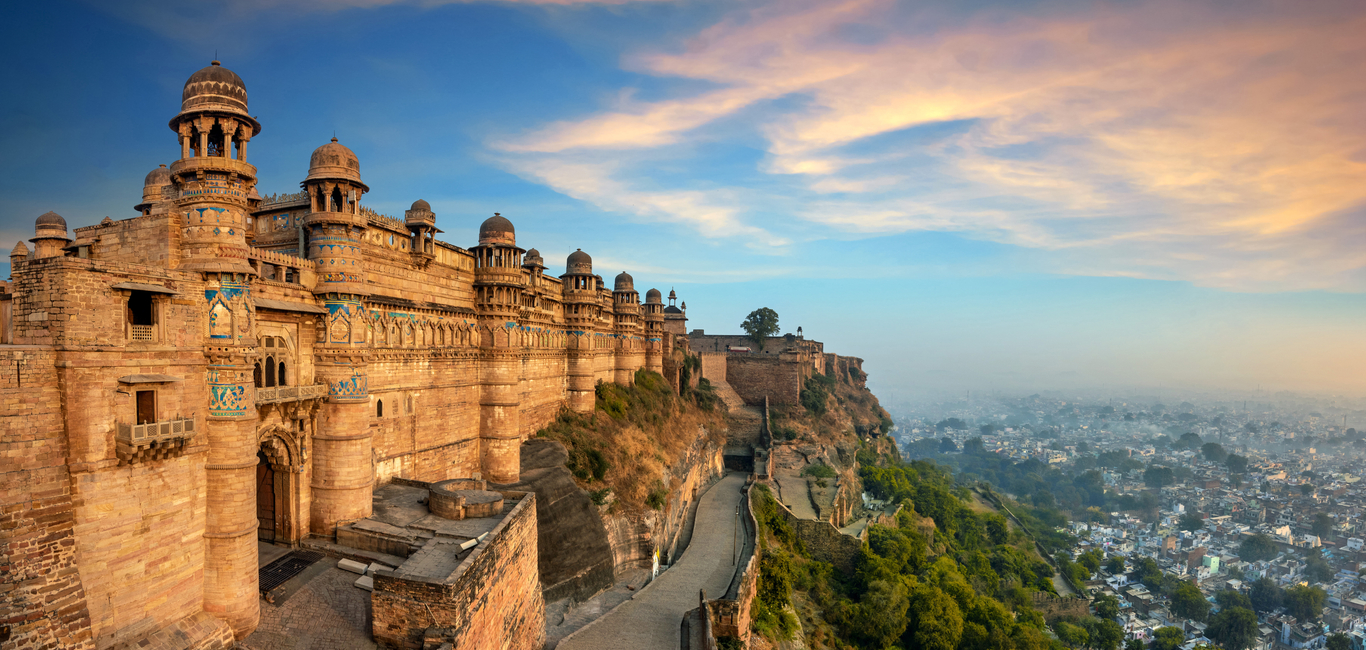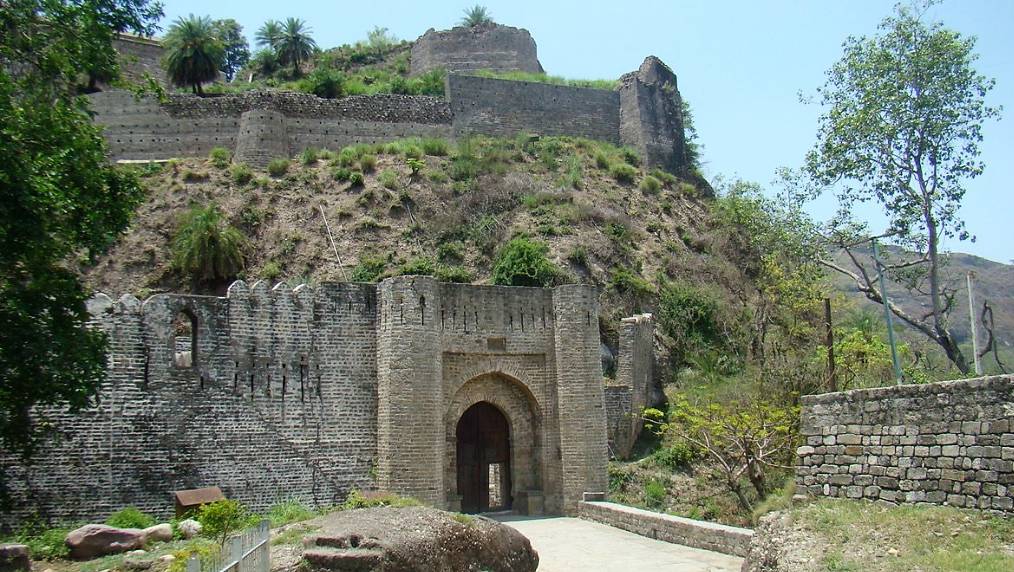Chivalrous Chittaurgarh, the citadel of the brave, reverberates with tales of valor and romance. The massive fort atop a hill is perhaps the best in the country and could be singled out for its glorious past. It is said that Bappa Rawal, the legendary founder of the Sisodia clan, conquered Chittaur from Mauryas in the middle of the 8th century. Chittaurgarh remained the capital of Mewar till 1567, when Akbar, sieged Chhitaur and Udaipur became the new capital of Mewar.
 The Fort: The formidable fort perched atop a 180-meter high hillock covers a huge area of 700 acres. It is said to be originally built by the Mauryans in the 7th century and later developed by the successive Mewar rulers. The citadel was ravaged thrice, but each time the indomitable spirit of Chittaur rose like a phoenix and regained its lost glory. In 1303, it was first sacked by Allaudin Khilji, who is said to have been lured by the legendary beauty of Rani Padmini. But, Rani Padmini preferred death to dishonor and committed Jauhar (self-immolation), along with other ladies of the court. Chittaurgarh was plundered again in 1535, by Bahadur Shah of Gujarat and finally in 1567, by the Mughal emperor Akbar. The fort is approached through seven huge g ateways or ‘pols’, which are guarded by watchtowers and massive iron spiked doors. Some of the important monuments inside the fort are:
The Fort: The formidable fort perched atop a 180-meter high hillock covers a huge area of 700 acres. It is said to be originally built by the Mauryans in the 7th century and later developed by the successive Mewar rulers. The citadel was ravaged thrice, but each time the indomitable spirit of Chittaur rose like a phoenix and regained its lost glory. In 1303, it was first sacked by Allaudin Khilji, who is said to have been lured by the legendary beauty of Rani Padmini. But, Rani Padmini preferred death to dishonor and committed Jauhar (self-immolation), along with other ladies of the court. Chittaurgarh was plundered again in 1535, by Bahadur Shah of Gujarat and finally in 1567, by the Mughal emperor Akbar. The fort is approached through seven huge g ateways or ‘pols’, which are guarded by watchtowers and massive iron spiked doors. Some of the important monuments inside the fort are:
Vijaya Stambh or ‘Victory Tower’: It was erected by Rana Kumbha in 1440, to commemorate his victory over the combined forces of the kings of Malwa and Gujarat. The nine-storeyed tower rises to a height of 120 ft (36.5 mts.) and has a girth of 30 ft. at the base. It is ornately carved with splendid sculptures of Hindu deities.
Kirti Stambh or ‘Tower of Fame’: The 22-meter high tower was built in the 12th century and is dedicated to Lord Adinath Rishabdeo, the first Jain tirthankar. The intricately carved structure is full of figures from Jain Pantheon.
Rana Kumbha’s Palace: Rani Padmini is said to have committed Jauhar in one of the underground cellars of the palace. The palace although in ruins, reflects the tastes of Rana Kumbha, one of the greatest Mewar rulers.
 Padmini Palace: The Zanana Mahal’ of the palace overlooks a pond of water, where Allaudin Khilji is said to have seen the reflection of Rani Padmini.
Padmini Palace: The Zanana Mahal’ of the palace overlooks a pond of water, where Allaudin Khilji is said to have seen the reflection of Rani Padmini.
Meera Temple: It is dedicated to Meera Bai, a mystic poetess and a great devotee of Lord Krishna. She was married to Bhojraj, the son of Rana Sanga of Mewar.
Kumbha Shyam Temple: The temple of Varah (Boar), an incarnation of Lord Vishnu was built by Rana Kumbha in 1448. It is also associated with Meera Bai.
Kalika Mata Temple: The temple of Goddess Kali was originally built as a Sun Temple by Bappa Rawal in the 8th century.
Gov. Museum, Fateh Prakash Mahal: It exhibits a rare and rich collection of sculptures from the fort and the temples.




